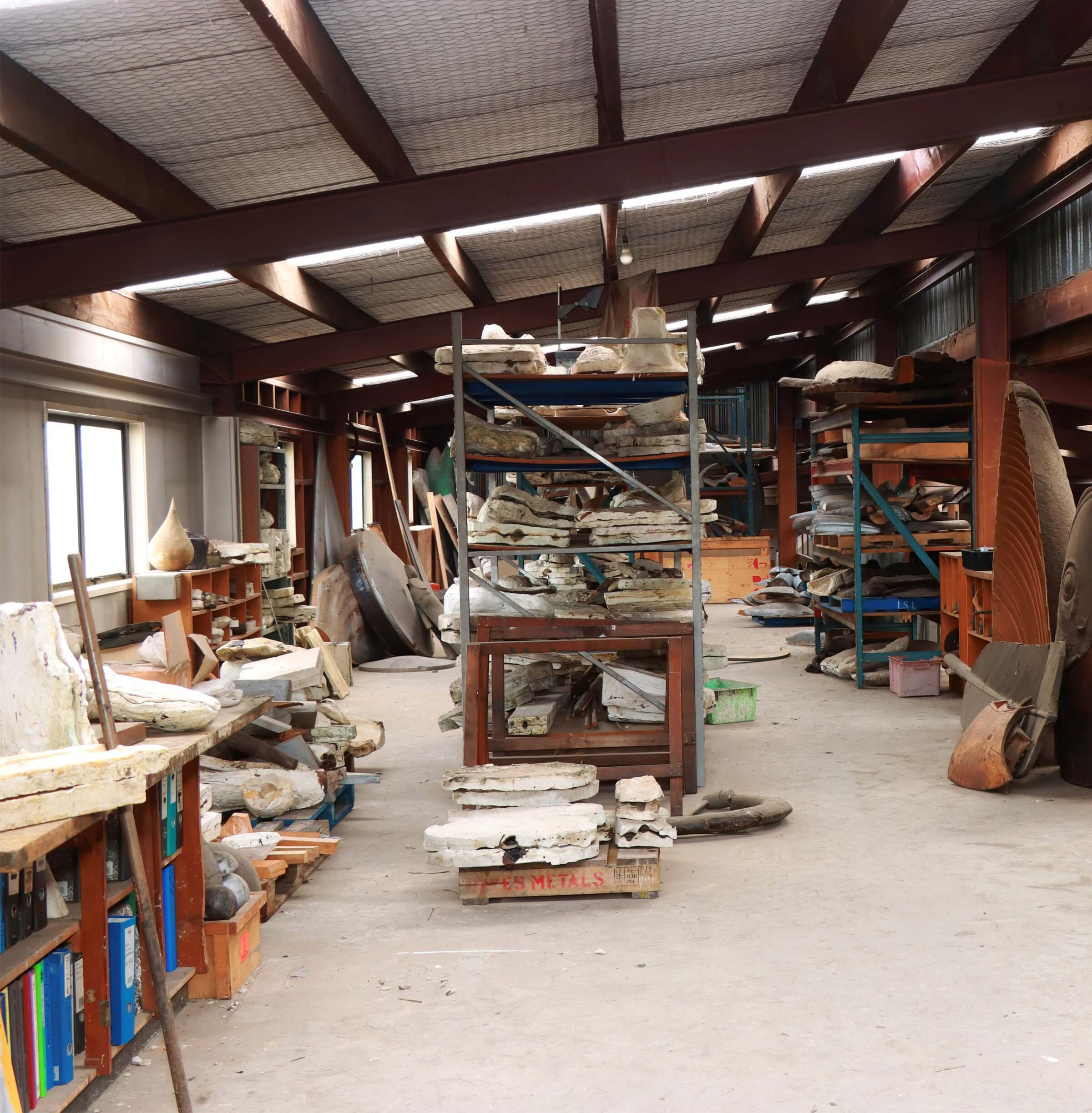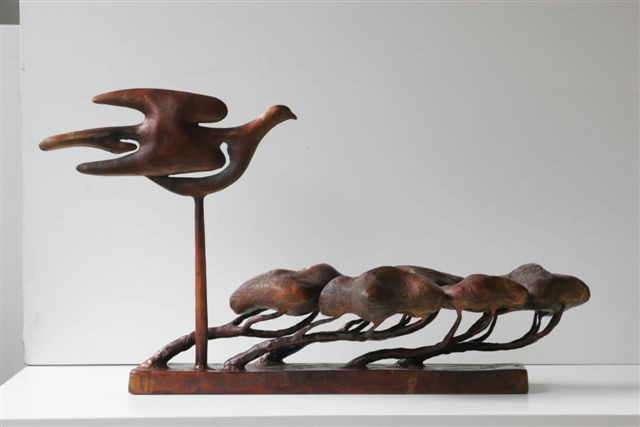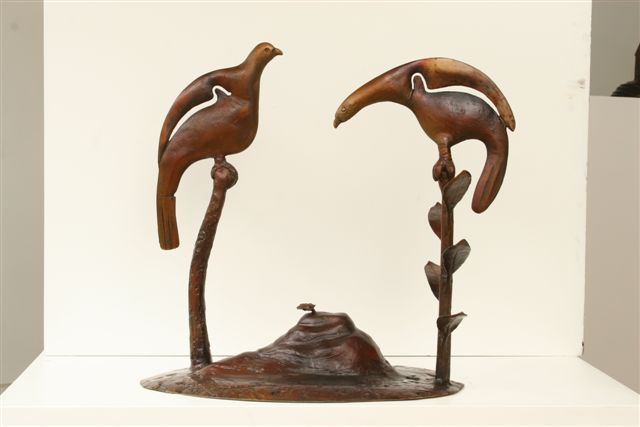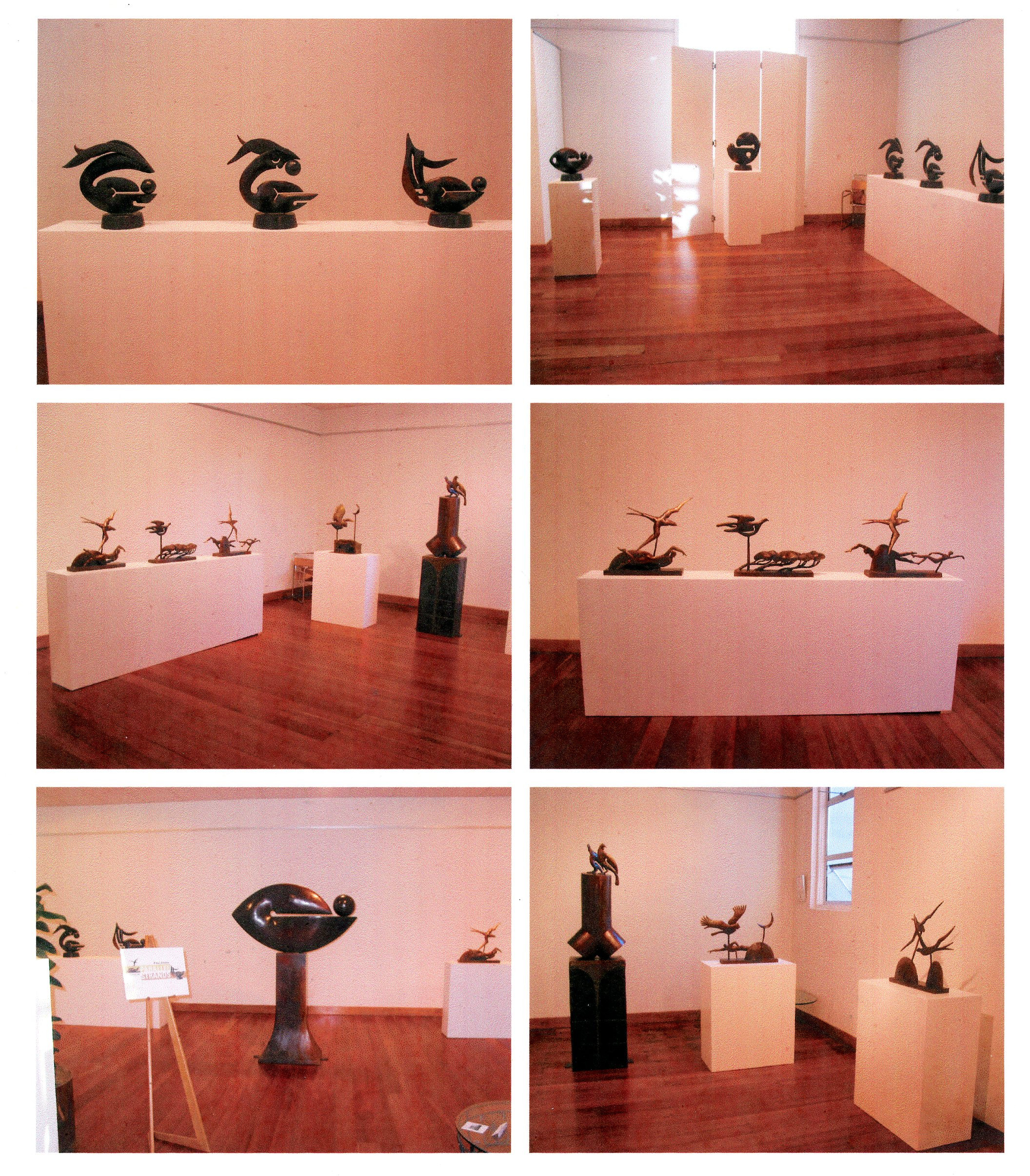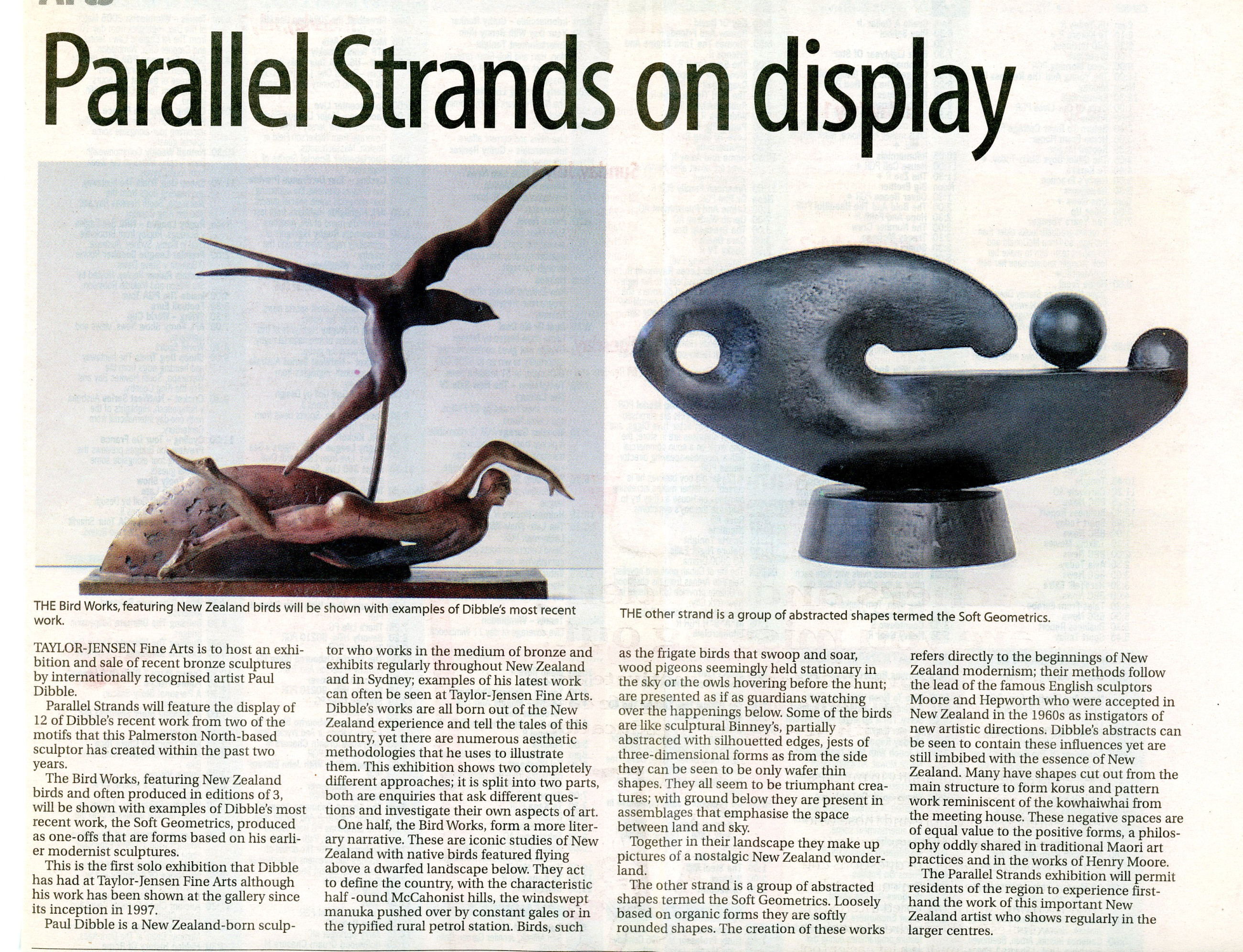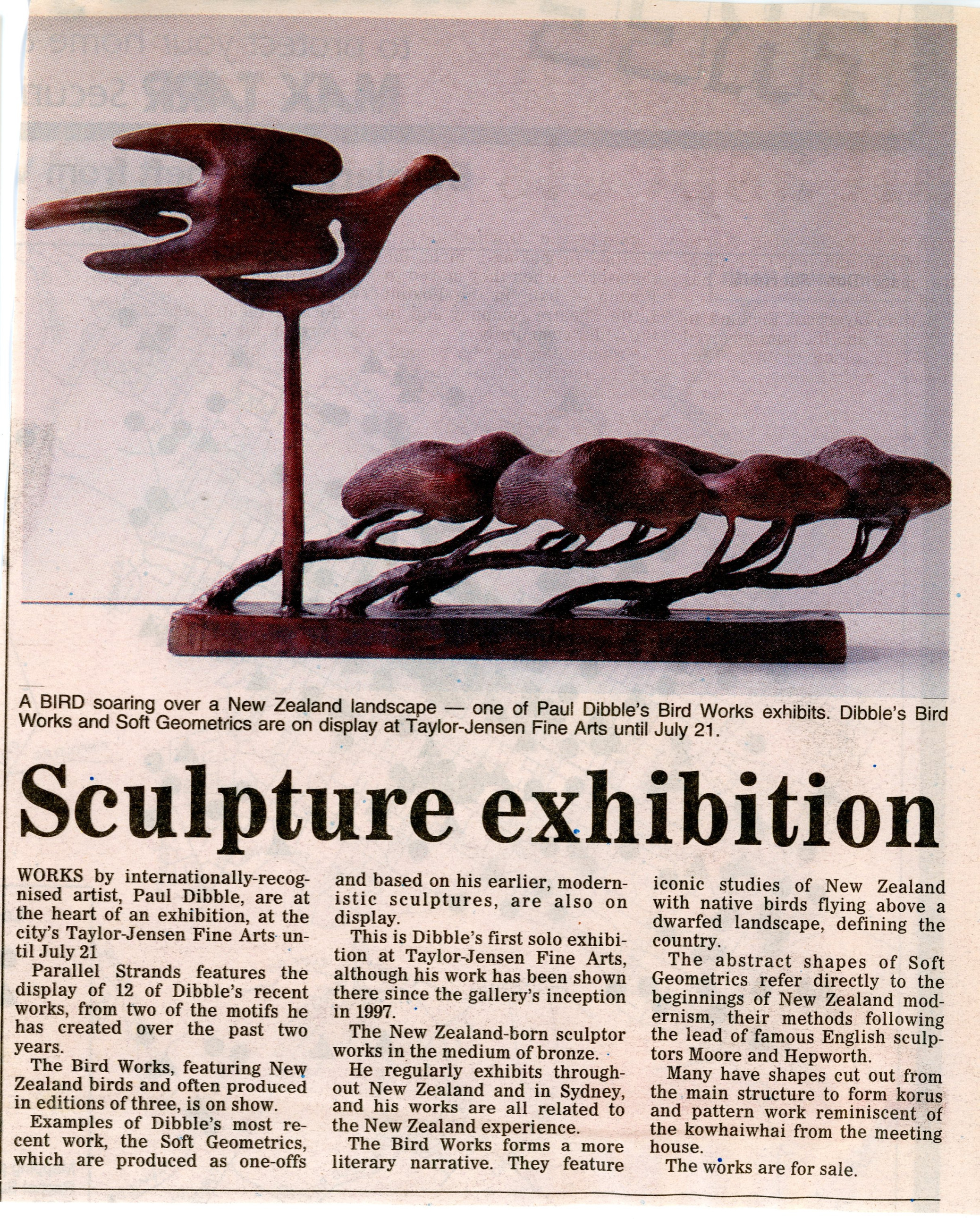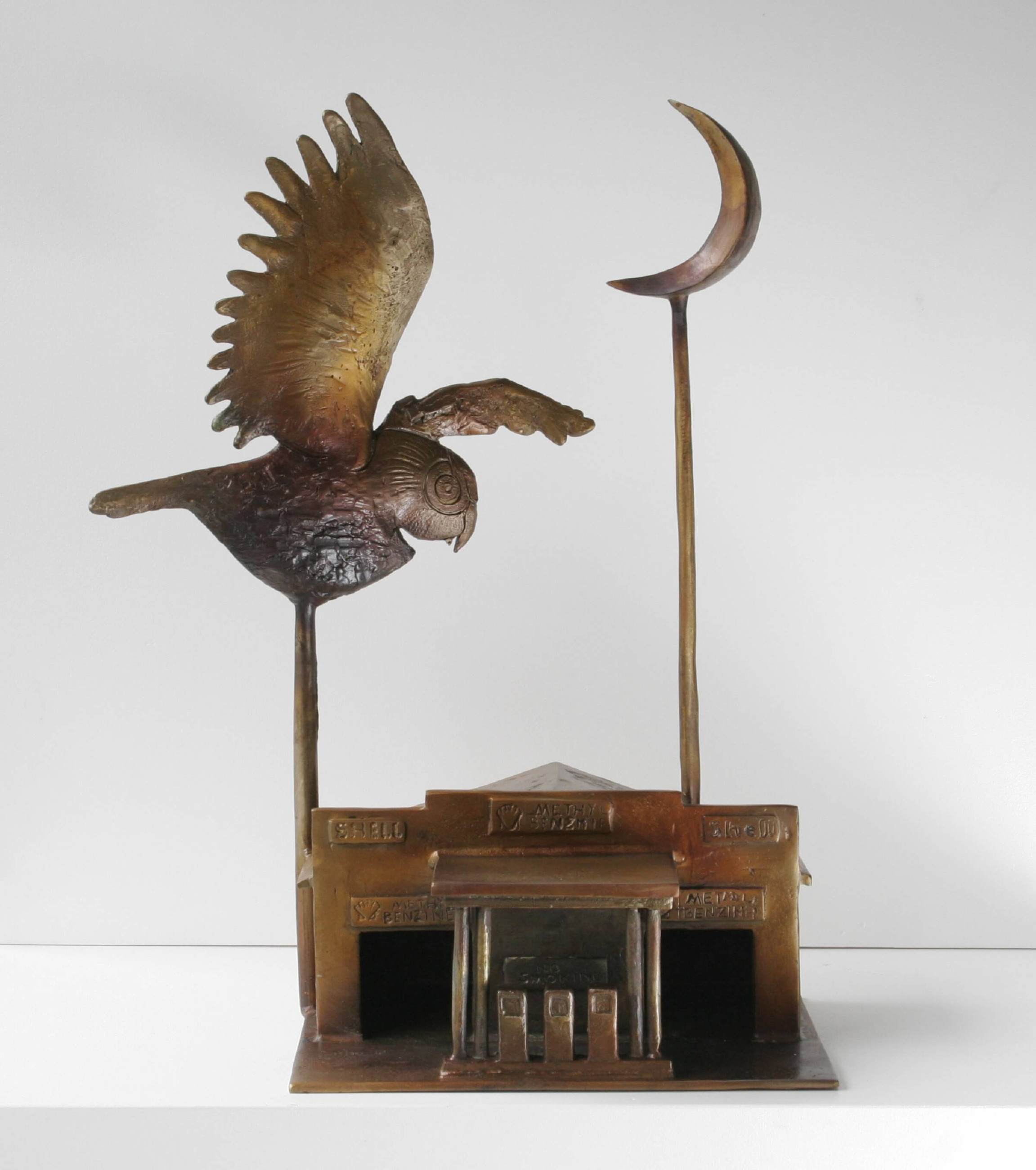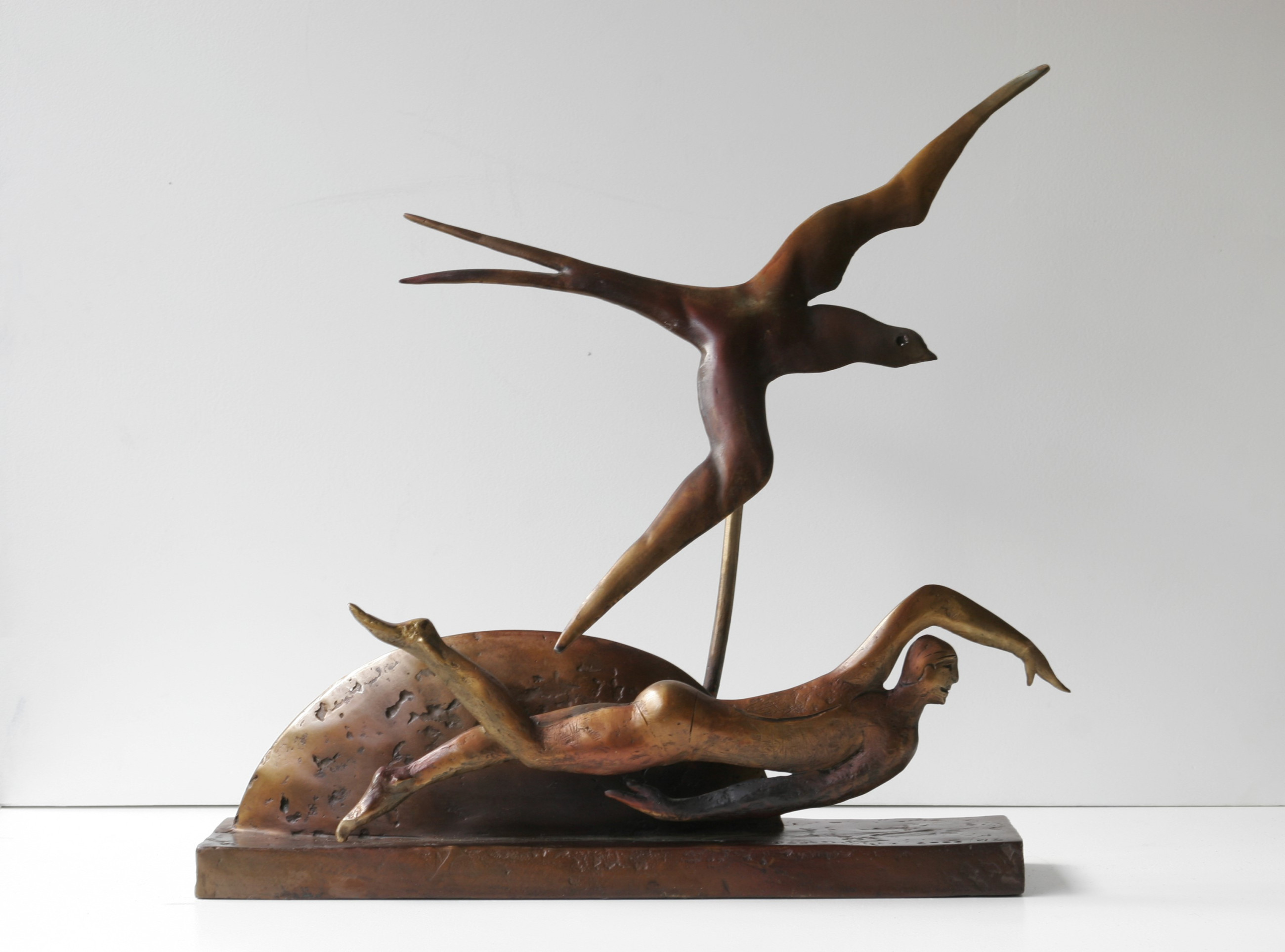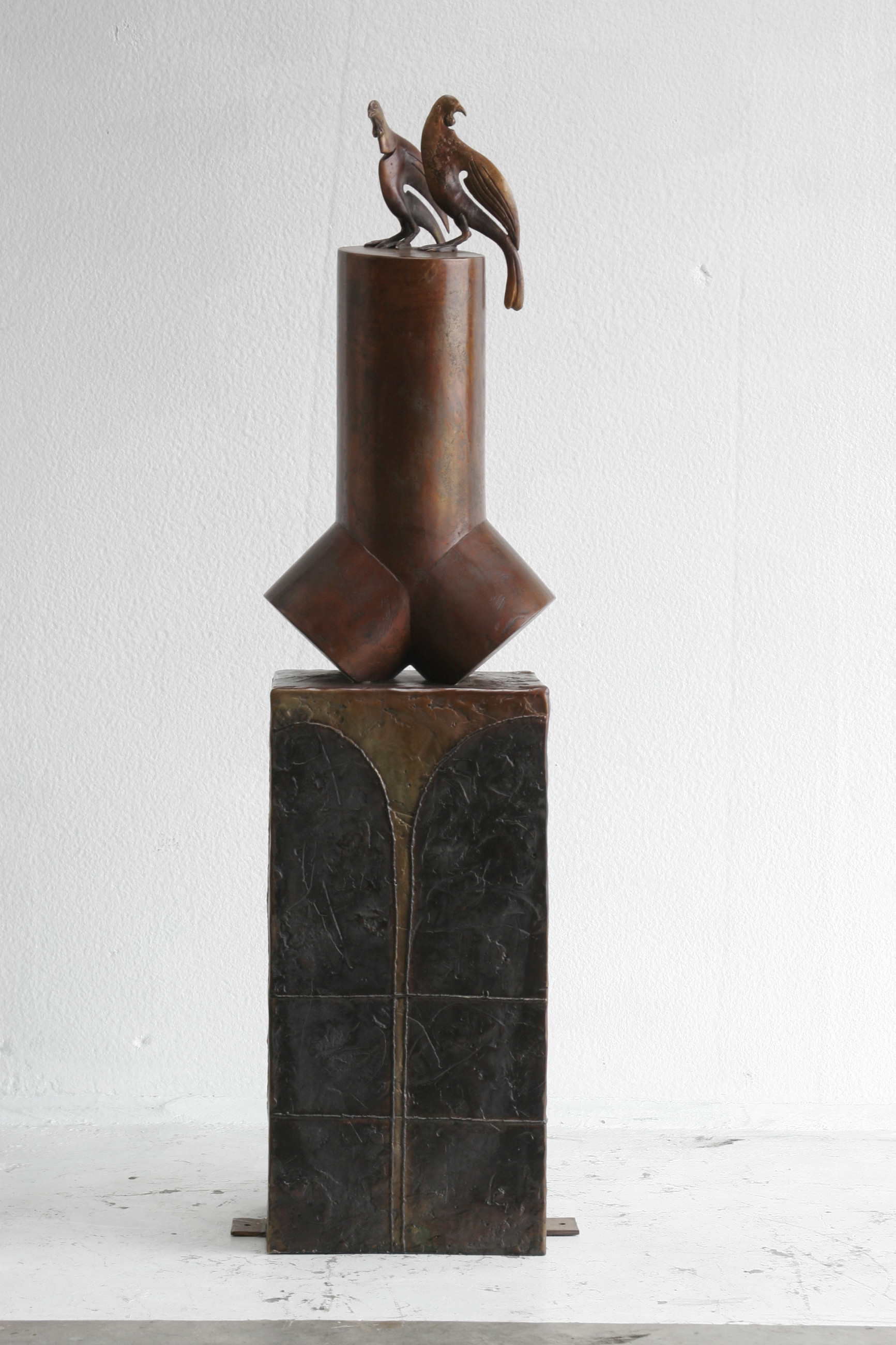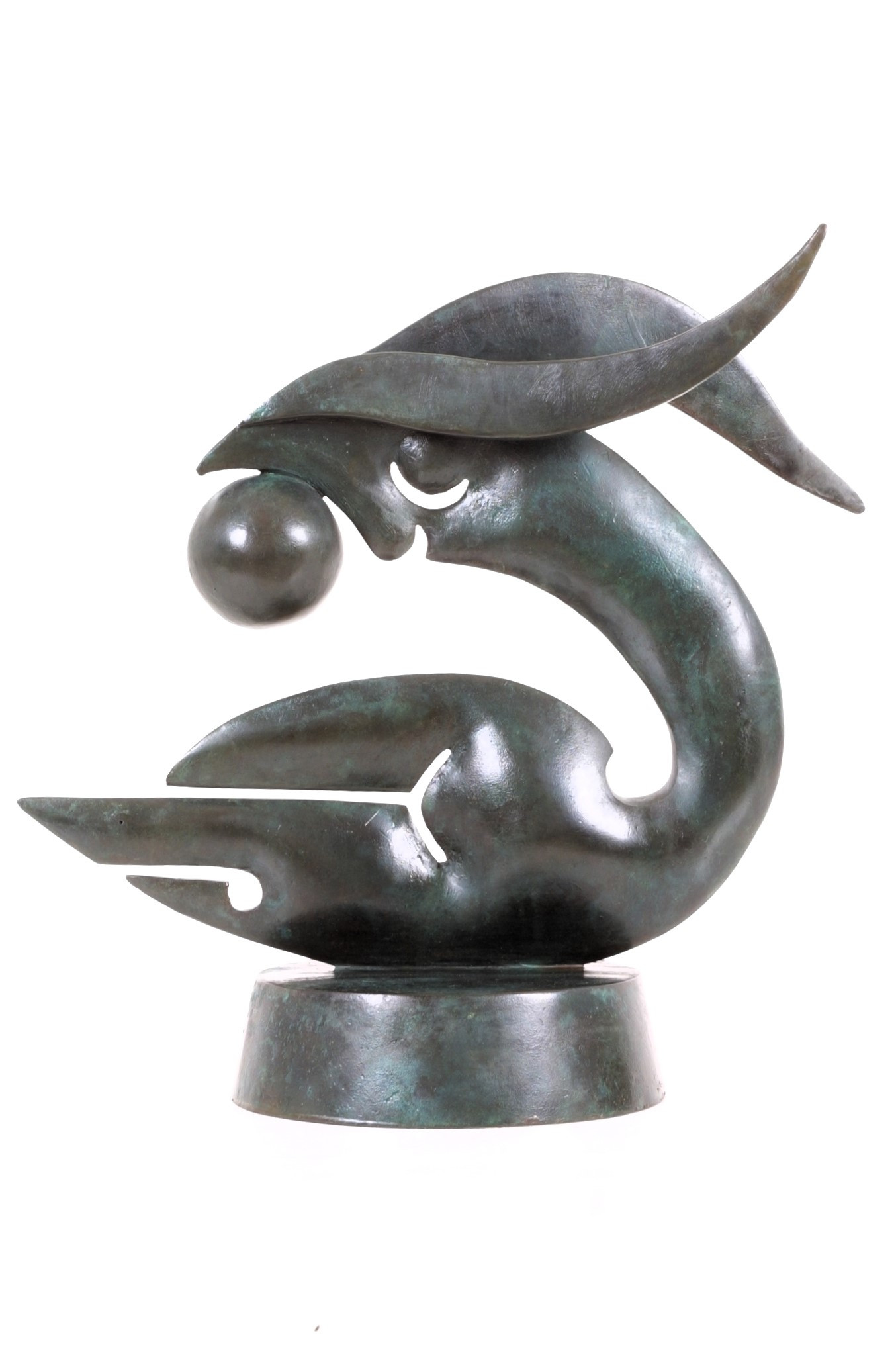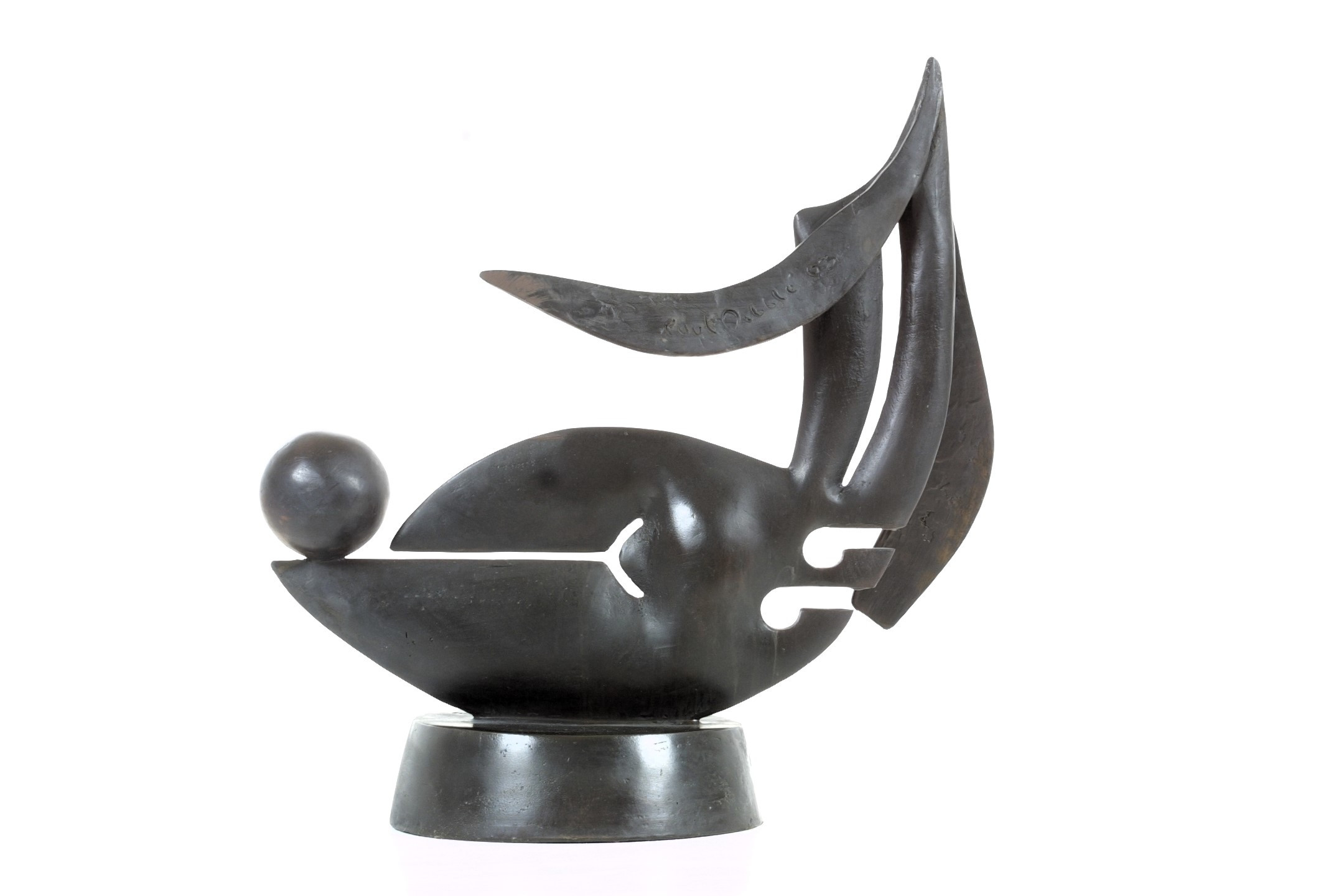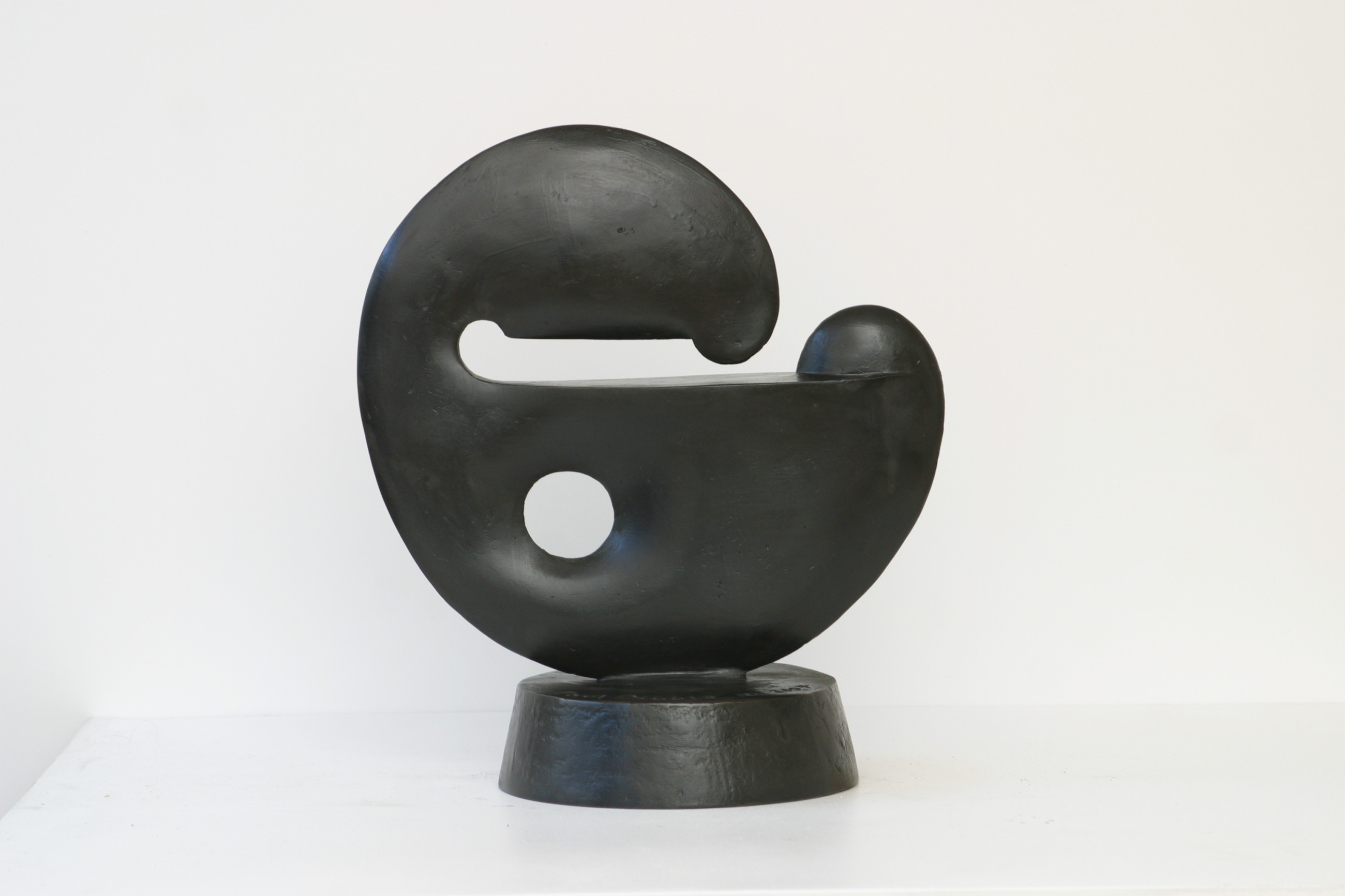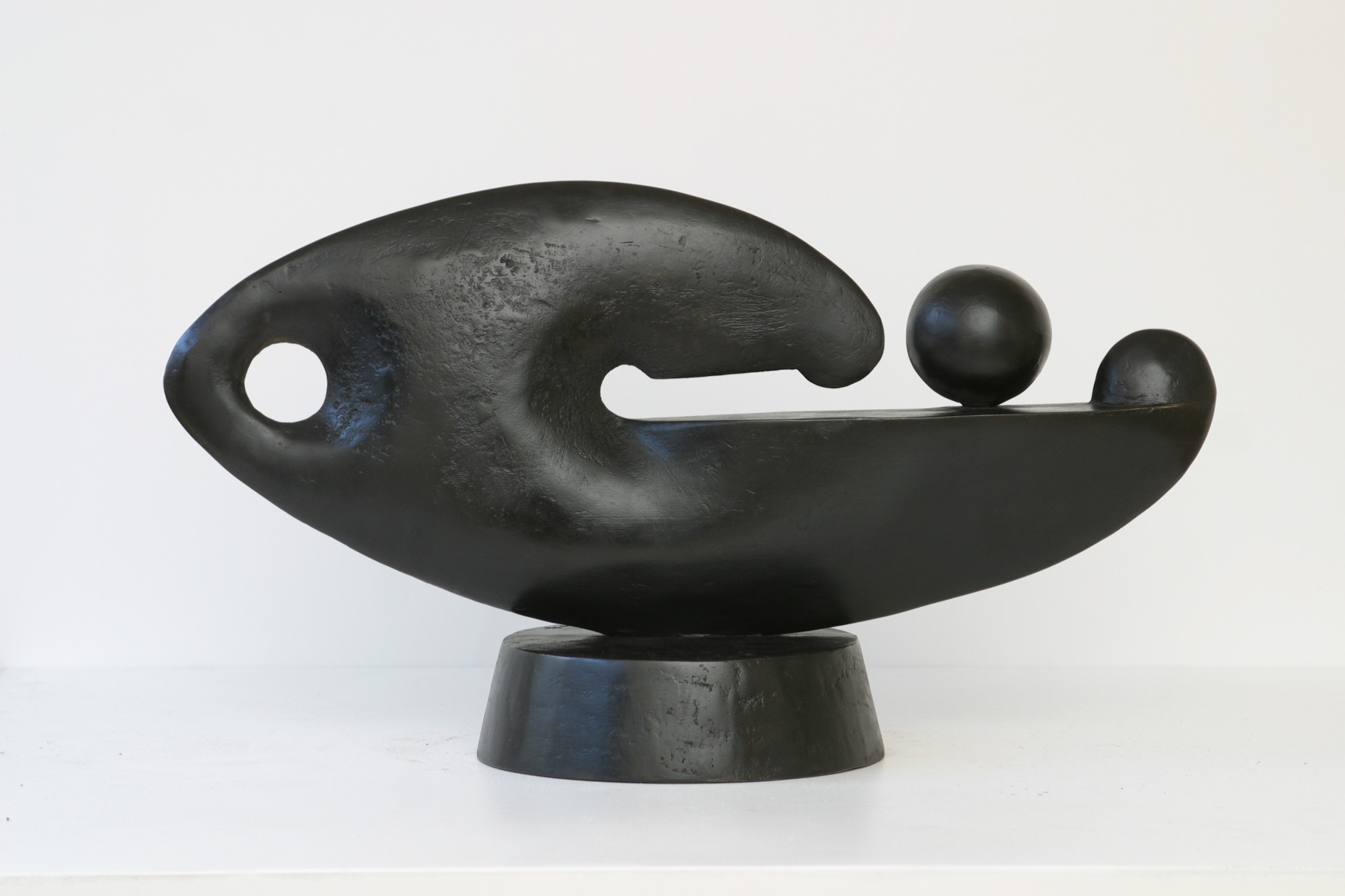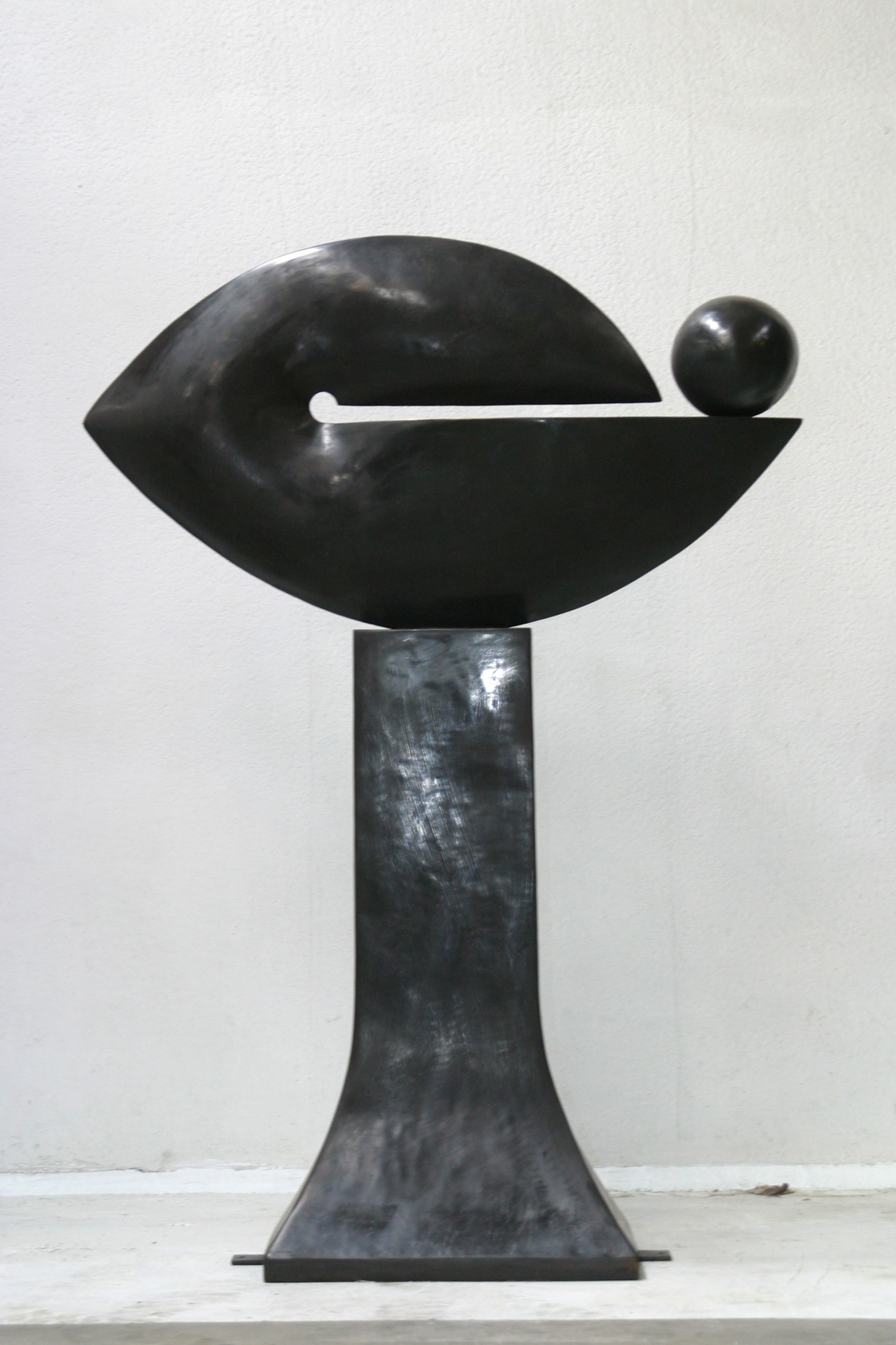July 1 - July 21, 2005 Parallel Strands
July 1 - July 21, 2005 Parallel StrandsSolo, Taylor-Jensen Fine Arts, Palmerston North
Text
One half of the exhibition, the “bird works” form a more literary narrative. These are iconic studies of New Zealand with native birds featured flying above a dwarfed landscape below. They act to define the country, with the characteristic half round ‘McCahonist’ hills, the windswept manuka pushed over by constant gales or in the typified rural petrol station. Birds, such as the frigate birds that swoop and soar, woodpigeons seemingly held stationary in the sky or the owls hovering before the hunt, are presented as if as guardians watching over the happenings below. Some of the birds are like sculptural ‘Binney’s’, partially abstracted with silhouetted edges, jests of three-dimensional forms as from the side they can be seen to be only wafer-thin shapes. They all seem to be triumphant creatures, with ground below they are present in assemblages that emphasize the space between land and sky. Together in their landscape they make up pictures of a nostalgic New Zealand wonderland.
The other strand is a group of abstracted shapes termed the ‘soft geometrics’. Loosely based on organic forms they are softly rounded shapes. The process of these works refers directly to the beginnings of New Zealand modernism, their methods follow the lead of the famous English sculptors Moore and Hepworth who were accepted in New Zealand in the 1960s as instigators of new artistic directions. Dibble’s abstracts can be seen to contain these influences yet are still imbibed with the essence of New Zealand. Many have shapes cut-out from the main structure to form koru and pattern work reminiscent of the kowhaiwhai from the Māori meeting house. These negative spaces are of equal value to positive forms, a philosophy oddly shared in traditions Māori art practises and in the works of Henry Moore.
